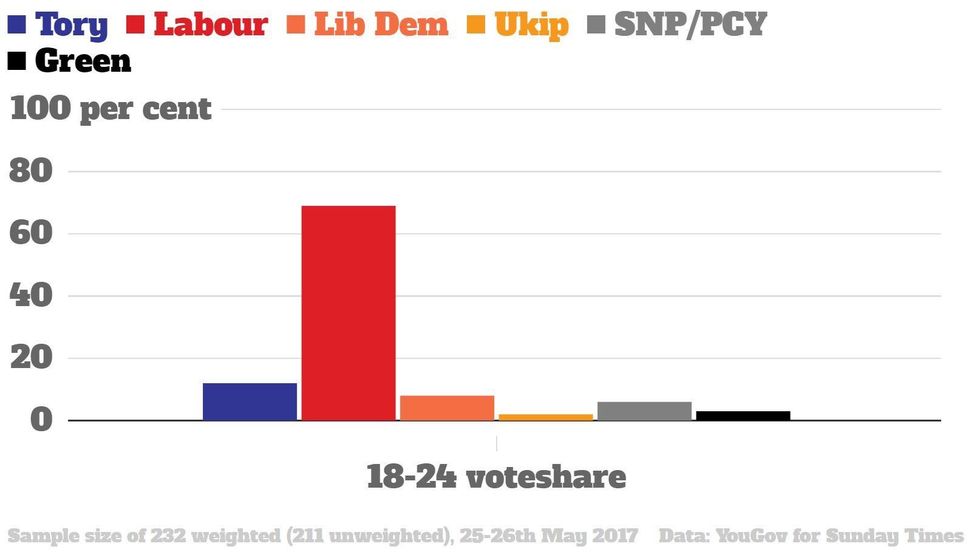Louis Dor
May 29, 2017

Picture:
Jeff J Mitchell/Getty Images
A lot of news stories are very excited about Jeremy Corbyn's chances with the youth vote.
This has partly been fuelled by the swell of young people applying to the electoral register.
Since 18 April, when Theresa May called for a 8 June general election, over 1 million people under the age of 25 registered to vote:
Here's a breakdown by age group: Applications to electoral register between 18 April and 22 May
<25: 1,051,30
25 to 34: 972,680
35 to 44: 432,220
45 to 54: 244,640
55 to 64: 134,865
65 to 74: 70,797
75<: 31,759
We're sorry to burst the bubble, but this is likely to do with the fact that young people are more likely to move house and thus re-register. It could be endemic of a greater political engagement, and it isn't insignificant, but don't read too much into the high numbers compared to older age groups.
While this is good news for Corbyn, young voters don't vote as a homogenous block.
Despite this, many publications have written about how crucial Labour's youth vote could be to a decent performance in the election.
This has been fuelled by recent polls showing a rise for Labour among 18-24-year-olds.
The latest YouGov poll put Labour at 69 per cent among the under 25s.
This isn't an inconsiderable lead and (as the upcoming chart will show) it's also a big spike.
However, this is where we need to talk about sampling and how it's carried out.
Comparing demographics in polling leads to smaller sample sizes and therefore much larger margins for error - the latest YouGov indicator is based off a weighted 232 respondents aged 18-24.
As such demographic indicators tend to vary more...
...than headline figures:
Meaning that you're more likely to be off from the supposed "true figure".
There's also an issue of turnout.
As the Financial Times has pointed out, YouGov is more likely to show a narrower Conservative lead based on how likely respondents say they are to vote.
Wider Conservative leads are seen in polls like ComRes and ICM, which model turnout based on historical figures for demographics.
The fact is, young people are historically far less likely to vote than older people.
On the other hand, what if Corbyn's campaign energises the young and you see record youth turnout for Labour?
YouGov claimed this week that if the vote was held only among under 50s, Corbyn would be the likely victor.
But let's be clear...
The Conservatives won a majority in 2015 against former Labour leader Ed Miliband, who had been ahead in the polls by a distinct margin from 2013 to 2015.
He was neck and neck in the run-up to polling day, when the exit polls suddenly jumped in the Conservatives favour. If anything, they'd been overestimating Labour turnout.
This led to the "shy Tories" theory that people had misled pollsters in the run up to the election, or simply got to the ballot and changed their minds.
Consider these factors when observing the gulf Jeremy Corbyn's Labour has to narrow in 2017 compared to the neck and neck race that was the 2015 election.
Jeremy Corbyn could win an election on the under 50s vote. However, you'd probably need an awful lot of over 50s to not vote.
And for another late surge to matter to turn swing voters on the day, as opposed to postal voting.
And very high Labour turn out and complacent Tories leading to low Conservative turnout.
At present, its quite unlikely, is what we're trying to say.
It's 2017, though. Anything could happen.
More: Since Theresa May called an election, 2 million young people have registered to vote
Top 100
The Conversation (0)

















